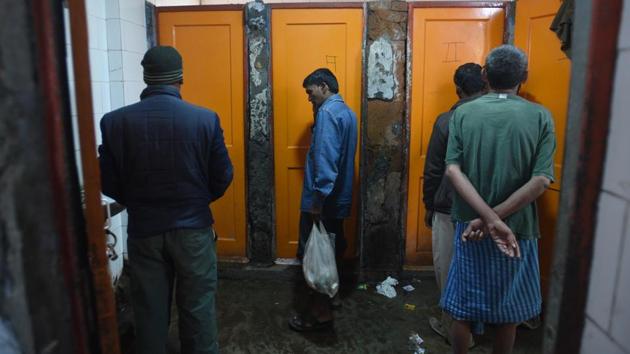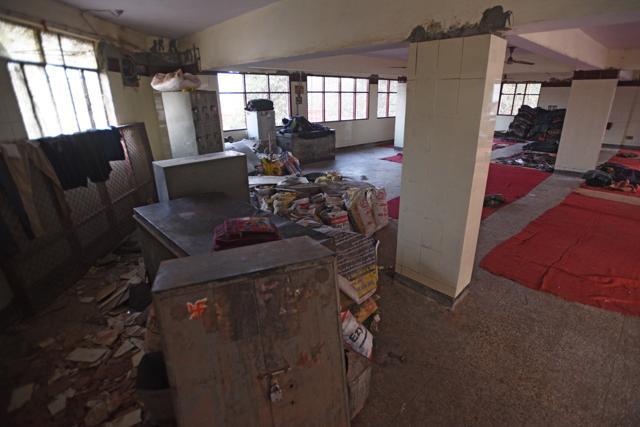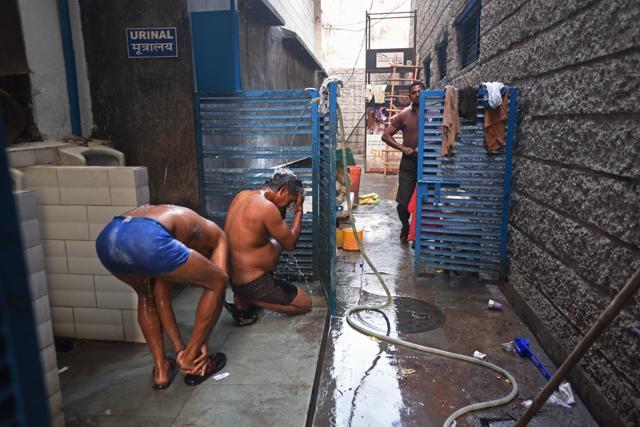As winter sets in, homeless shelters across Delhi plagued by same old issues
Hindustan Times’ visit to five homeless shelters reveals shortage of toilets, geysers, space and food
It’s the time of the year again when thousands of homeless look for shelter from Delhi’s unforgiving winter nights. In its ‘Winter Action Plan’ announced earlier this week, Delhi government set up 183 shelter homes across the city to accommodate 15,774 homeless people.

Though a survey conducted by the government’s Delhi Urban Shelter Improvement Board (DUSIB) in 2014 records the number of homeless people in Delhi at 16,000, various NGOs estimate that the number may run up to a lakh people or more.
As winter sets in, DUSIB stares at the annual challenge of providing a safe and comfortable stay for the men, women and children who otherwise largely live on pavements during summer. DUSIB has decided to ensure free stay to the homeless till March 2018, with the facilities for breakfast, warm water and television in all shelters.
Hindustan Times visited five night shelters across the city to see the level of preparedness for winter. While officials say the plan will be implemented over the next few weeks, the homeless are hoping they will not have to wait for long to be able to stay warm.

Rooplal Sahu, a rickshaw puller, stays at a night shelter near Old Delhi Railway Station in Fatehpuri. He said that currently, over 200 inmates at the shelter are forced to share one geyser. According to the caretaker, the capacity of the shelter home is 450 people, and the crowd is expected to grow as the intensity of winter increases.
At another night shelter in Chandni Chowk that houses more than 200 people, there is no geyser and facilities for breakfast are yet to begin. The shelter capacity is 150.
The stretch from ISBT Kashmere Gate to Jama Masjid and places near hospitals, railway stations, Bangla Sahib Gurdwara, Sarai Kale Khan remain densely populated with the homeless. On November 13, the temperature dipped to season’s lowest at 12.4 degrees Celsius. Shelter supervisors say more people started coming in after November 15 when the Winter Action Plan was rolled out and the stay made free.
In summer, each person has to pay Rs 10 for a night’s stay.
Across the street from the campus of All India Institute of Medical Sciences (AIIMS), two night shelters house outstation patients and their families. One of these is a porta-cabin-type shelter. Patients, who are waiting for appointments, and have nowhere to stay, end up living here. They said they are still being charged Rs 10 every night. They added that they are not provided any breakfast.

Of the 183 night shelters set up by DUSIB, 73 are permanent buildings, 109 shelters are porta-cabins and one has been set up in a tent. In addition, DUSIB officials said that 70 temporary shelters are being set up to accommodate another 3,000 people.
DUSIB CEO Shurbir Singh said that geysers have been installed at most of the permanent shelters, and remaining shelters will be equipped soon. Distribution of tea and toasts to inmates will begin from December, he said.
On being questioned about people still being charged at some shelters, Singh maintained that all shelters have been made free. “If any caretaker has asked for money, then that person was probably unaware about our notification in this regard. We will look into the matter,” Singh told Hindustan Times.
However, the majority of the homeless people HT spoke to said that not having geysers and being charged Rs 10 was not their primary worry. They were more concerned about the lack of basic facilities such as food and functioning toilets.
Sashi Dayal, who stays at a shelter home in Chandni Chowk , pointed out that the toilet complex is closed off by 11pm, while only one toilet remains available.
“A single toilet for more than 150 inmates during the night is not enough. There have been instances when people had to wait for a long time to relieve themselves at night,” Dayal said.
Sunil Kumar Aledia, executive director Centre for Holistic Development, said that as per the guidelines of the National Urban Livelihoods Mission, at least 50 sq ft space should be given to every person in night shelters. But Delhi shelters have lack of space and people get only 10-12 sq ft area.
“As per their winter action plan, DUSIB had to set up 70 temporary shelters which is yet to be done. NULM guidelines mention food for all homeless at shelters. But this practice is hardly seen anywhere as well,” Aledia said.
Stay updated with all top Cities including, Bengaluru, Delhi, Mumbai and more across India. Stay informed on the latest happenings in World News along with Delhi Election 2025 and Delhi Election Result 2025 Live, New Delhi Election Result Live, Kalkaji Election Result Live at Hindustan Times.
Stay updated with all top Cities including, Bengaluru, Delhi, Mumbai and more across India. Stay informed on the latest happenings in World News along with Delhi Election 2025 and Delhi Election Result 2025 Live, New Delhi Election Result Live, Kalkaji Election Result Live at Hindustan Times.





